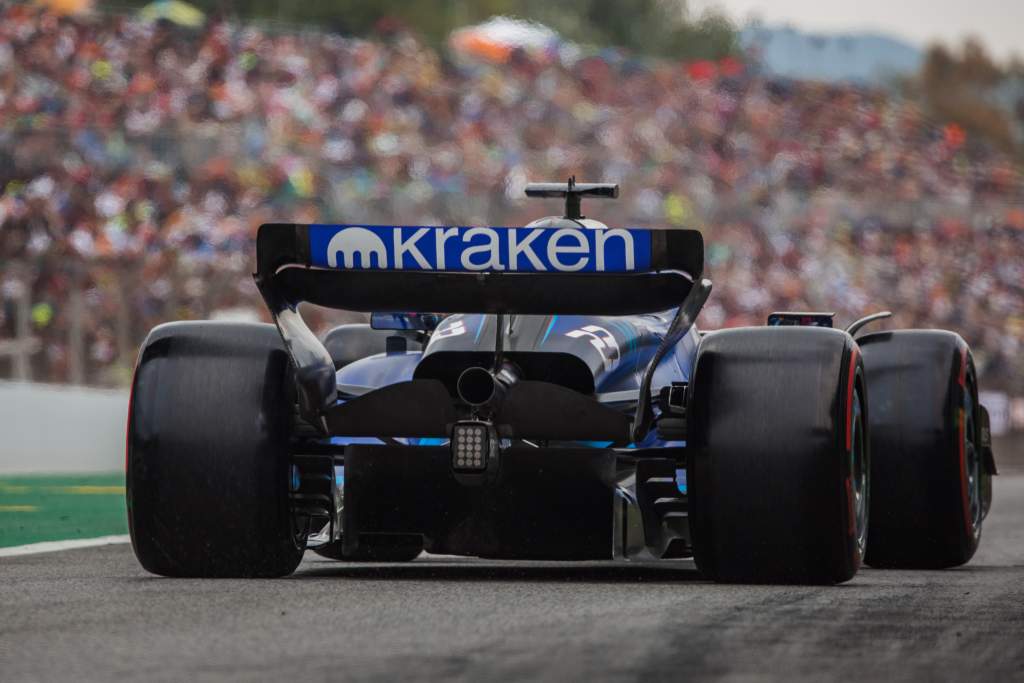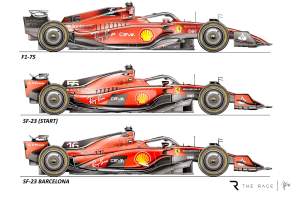Up Next

Williams’s least competitive weekend of the 2023 Formula 1 season so far actually showcased how much progress the team has made.
Both Williams drivers were eliminated in Q1 at the Spanish Grand Prix, with Alex Albon converting 18th on the grid to a lapped 16th in the race. Team-mate Logan Sargeant started from the pits after qualifying at the back following an FP3 crash, finishing 20th.
By every measure this was the weakest performance over a weekend for Williams of 2023, both in terms of results and overall deficit to the pace. But there was a positive side.
Barcelona is one of the most demanding circuits of the season aerodynamically and is therefore one where the downforce deficit of Williams translates into a large pace disadvantage. In 2022, the fastest Williams laptime was almost 3.6% off the pace, but this year the deficit was a vastly reduced 2.478%. While the removal of the chicane for 2023 has changed the characteristics of the circuit, it remains the most relevant aerodynamic test of the season so far.
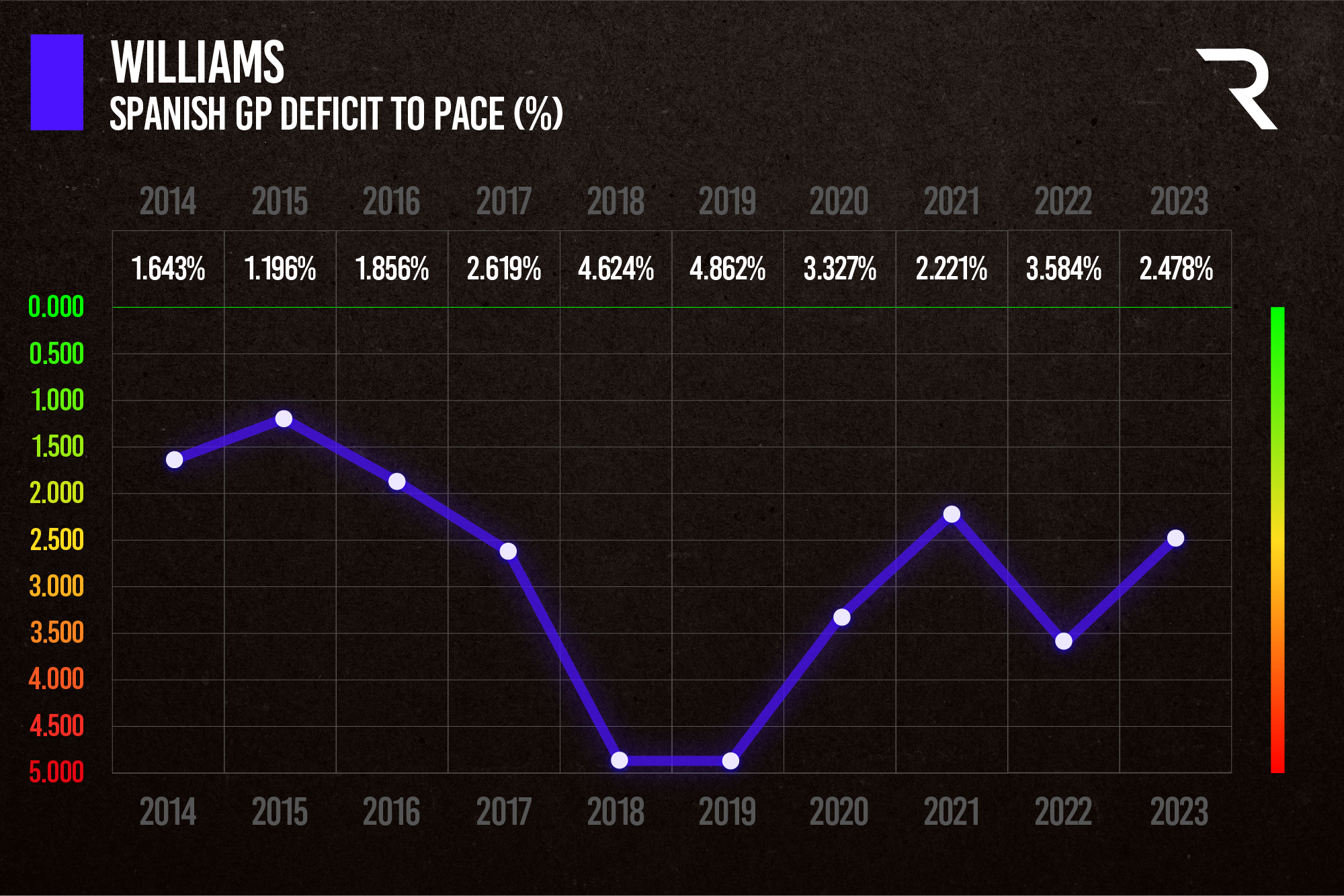
Barcelona has been a poor track for Williams given its aero struggles in recent years. Having started the 1.6-litre V6 turbo hybrid era in 2014 strongly, its form dipped with the nadir in 2018 and 2019. Since then, it has done better, with its Spain peak in 2021 – a deficit of 2.221% that it wasn’t too far off matching this year.
It’s still a long way off, equivalent to 1.8s, but considering the unexpectedly good progress made by Red Bull with the RB19, Williams has done well at least to close the gap. So while it looked bad position-wise, pace-wise there was at least some reason to be positive.
“It’s not too bad,” said Williams’s head of vehicle performance Dave Robson when asked by The Race if the pace deficit in Spain showed a positive trend. “We use this track, along with Bahrain, as the two reference circuits when you’re trying to understand, ‘did we achieve what we set out to?’ and what everyone else has done over that same period.
“It’s a little bit more difficult here this year because of the changes to the track. We had a view of how everyone would have moved on in 12 months, including ourselves, and we were able to modify that to suit the circuit layout and make an assessment of how we have done relative to everyone else.
“Clearly, there are swings and roundabouts. The Aston Martin is obviously considerably quicker than we thought it would be 12 months ago, but equally there are some cars there that are quicker than us, that’s quite clear, but not by as much as we thought they would be when we extrapolated from 12 months ago to now.
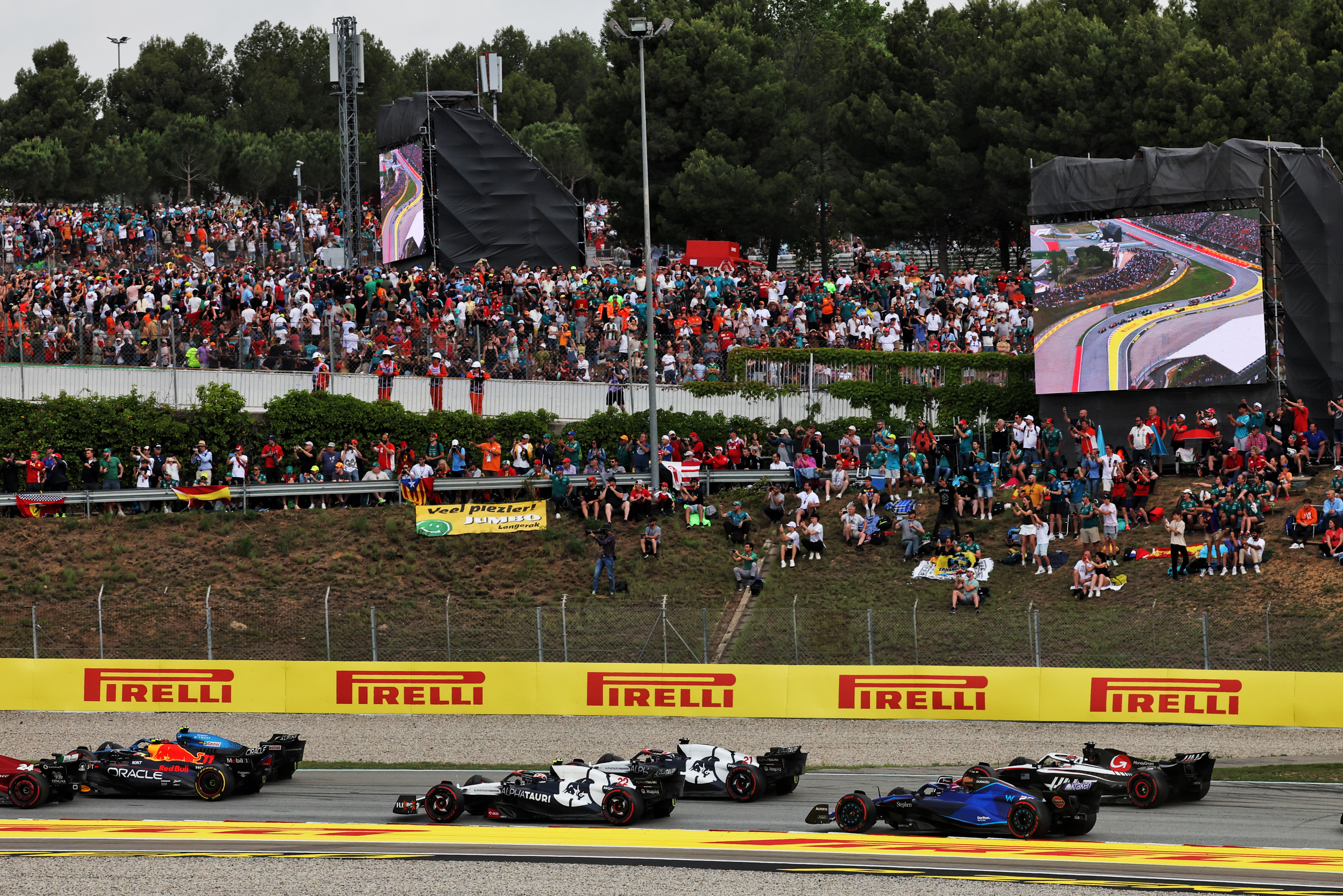
“It feels a little bit odd to say because we’re clearly not very good here at the moment and it’s reasonably obvious why, but extrapolating where we thought things might be, it’s not so bad.
“There is definitely progress there. It hasn’t manifested itself in the order of the timesheets, but in actual laptime it’s not as bad as it may have been.”
Williams has generally performed much more strongly this year. From 16 qualifying attempts (including the sprint shootout in Azerbaijan), Williams cars have made it out of Q1 50% of the time and twice reached Q3 with Albon.
However, the first part of the season was dominated by atypical circuits where the weaknesses of the Williams were mitigated. This meant the return to an orthodox, downforce-dependent circuit like Barcelona allowed Williams to get a better read on its progress and conduct some valuable set-up experiments.
“It’s definitely better to get back on a proper race track, one that we mostly understand, for two reasons,” said Robson. “One, you eliminate all that noise of the street circuits, but also you’ve got a nice combination of corners here.

“In FP1, we did a few set-up experiments just trying to improve the car in a few corners. We knew they weren’t going to be quicker here for our one lap but that didn’t matter, we were just trying to understand how the car behaves in a certain type of corner. That was fairly productive, we can take that back to the simulator, compare it and make sure that the simulation captures that well enough.
“Here is basically maximum downforce for the vast majority, but seemingly not quite all, and maybe in a fully dry qualifying a lot of those high-speed corners for the quick guys would have been not really corners whereas for us they are, which tells us something. So it’s fairly obvious where the improvement needs to be.”
Albon admitted that Barcelona was more representative of Williams’s real progress given the upturn in form at the unusual tracks that dominated the early stages of the season.
Although Williams scored its only point of the year with Albon’s 10th place in Bahrain, the most orthodox of the first six circuits visited, the performance of the car was at its best on lower-downforce tracks.
“We were on unique street tracks with characteristics where with confidence and driving you can do a little bit,” said Albon when asked by The Race if the Spanish GP performance was more in line with pre-season expectations.
“Around here, where every team’s done a million laps and every driver’s done a million laps, it’s very hard to break the trend and outperform it. It’s quite a tricky track and most of the teams have designed their cars around this place, so it looks optimised and it is.
“You look at qualifying and how close the whole pack is, and we were just kind of a step below there. We need some upgrades and it’ll come and until then it’s just about maximising the car we’ve got.”
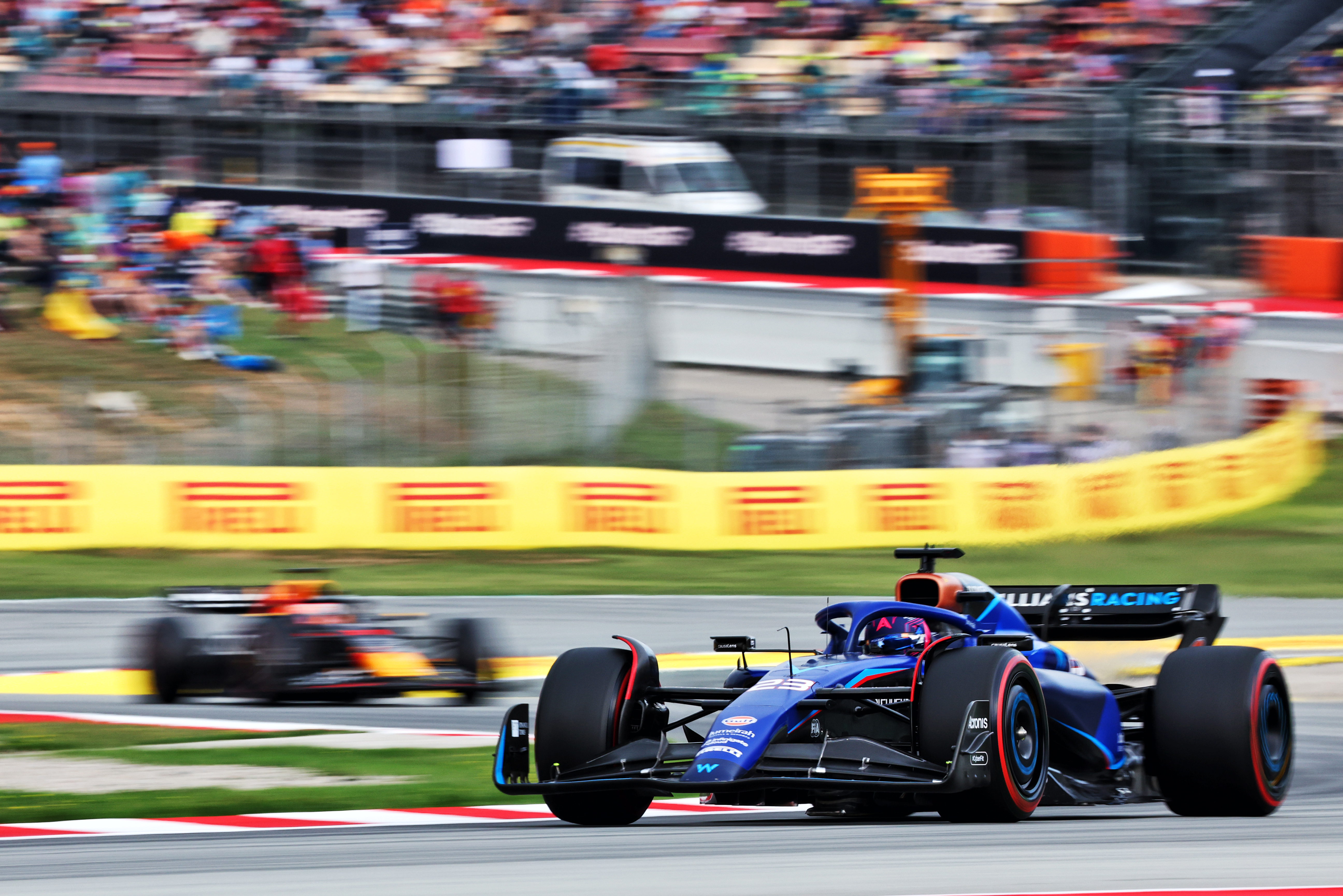
The Williams team is well aware of how far it needs to go and there are major changes being made under the leadership of team principal James Vowles. Currently it is without a permanent technical director, with David Worner holding the role on an interim basis, and head of aero after key personnel changes over the winter.
The team is still determined to make further progress over the rest of the season, which is logical given next year’s car will be an evolution so any gains made this year will transfer to 2024.
But given the years of under-investment at times when Williams was struggling financially, Robson is aware that while Vowles is leading the team in the right direction it is going to take time to get back to a level where it is as competitive as it should be.
“I’m completely confident in what he’s doing,” said Robson when asked about the changes being made by Vowles. “The timescales that are involved in actually seeing the real progress might take us beyond ’24 perhaps.
“There’s quite a lot of rebuilding and restructuring, as he said, and getting his experience [from Mercedes] of what state-of-the-art genuinely looks like has been quite enlightening.
“What it does mean is there’s a lot to do and probably more to do than we thought there was. He’s set in motion all the right things but there’s going to be a gestation period to all of that.”


